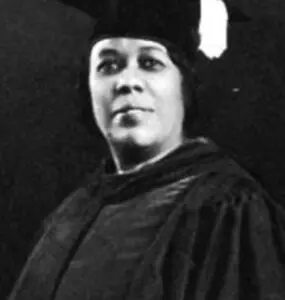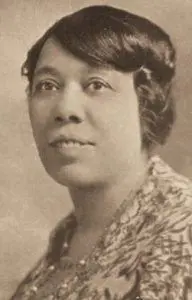Learn about Jennie D. Porter
Jennie D. Porter was born in Cincinnati, the daughter of the city’s first African American undertaker. She graduated from Hughes High School in 1893, and three years later, she followed in her mother’s footsteps by becoming a teacher.
Porter ran a private kindergarten in the West End for Black children who accompanied their parents to the Queen City during the Great Migration. She later accepted a teaching position at the Douglass School in Walnut Hills, where she worked for 17 years.

Although Ohio’s Brown-Arnett Bill called for phasing out segregated schools in 1887, Porter established the Harriet Beecher Stowe School in 1914 and became Cincinnati’s first African American woman principal. The school became the city’s premiere African American learning center, emphasizing academics and vocational and agricultural programs. Enrollment soared from 350 students in 1914 to 1300 students in 1922.
Creating the Harriet Beecher Stowe School strictly for African Americans gave Porter’s students opportunities not found in integrated schools; however, it also placed her at the center of local and national controversy. Porter believed segregated schools were better for African American children because they would learn and grow in an environment free from abuse and prejudice. Additionally, African American teachers could more easily find employment.
Related Article: Why So Many African Americans Have Roots in the West End of Cincinnati

Many in the community spoke out against Porter and the school. Despite this, she held to her conviction that segregated schools were better for African American children. She played a leading role across the nation in the controversy concerning the integration and segregation of schools.
Porter received a denunciation from Cincinnati’s Black newspaper, The Union, and the Cincinnati NAACP.
While at the Harriet Beecher Stowe School, Porter enrolled in the University of Cincinnati at age 37. She gained her Bachelor of Arts in 1923 and then petitioned the college to create a Bachelor of Education that required in-the-field training (i.e., student teaching), established in 1924.
Related Article: 20 Good Books about Race, Diversity, and Inclusion
Porter and two others became the first Blacks of record to receive master’s degrees at the University of Cincinnati in 1925. Three years later, she became the first African American to receive a Ph.D. from the college.
Porter continued to be principal at Harriet Beecher Stowe School until her death. Though her stance on segregated schools drew much criticism, she created one of the most important educational opportunities for African Americans in Cincinnati. In 1953, Cincinnati Public Schools named a new junior high school after Porter to relieve the overcrowding at the Harriet Beecher Stowe School.
Sources
19th Century Black Cincinnatians you should know | Cincinnati & Hamilton County Public Library (cincinnatilibrary.org)
Jennie Davis Porter | Walnut Hills History (walnuthillsstories.org)
Cincinnati History Library and Archives – cincymuseum.org
About The First 28
The First 28, graciously sponsored by the Greater Cincinnati Foundation, celebrates Black Cincinnatians who were the first in their fields. Each day during Black History Month, we will celebrate athletes, artists, business leaders, civil rights activists, educators, physicians, and politicians.
The Voice of Black Cincinnati is a media company designed to educate, recognize, and create opportunities for African Americans. Want to find local news, events, job postings, scholarships, and a database of local Black-owned businesses? Visit our homepage, explore other articles, subscribe to our newsletter, like our Facebook page, join our Facebook group, and text VOBC to 513-270-3880.
Images provided by UC Magazine and Walnut Hills Stories
Comments are closed.